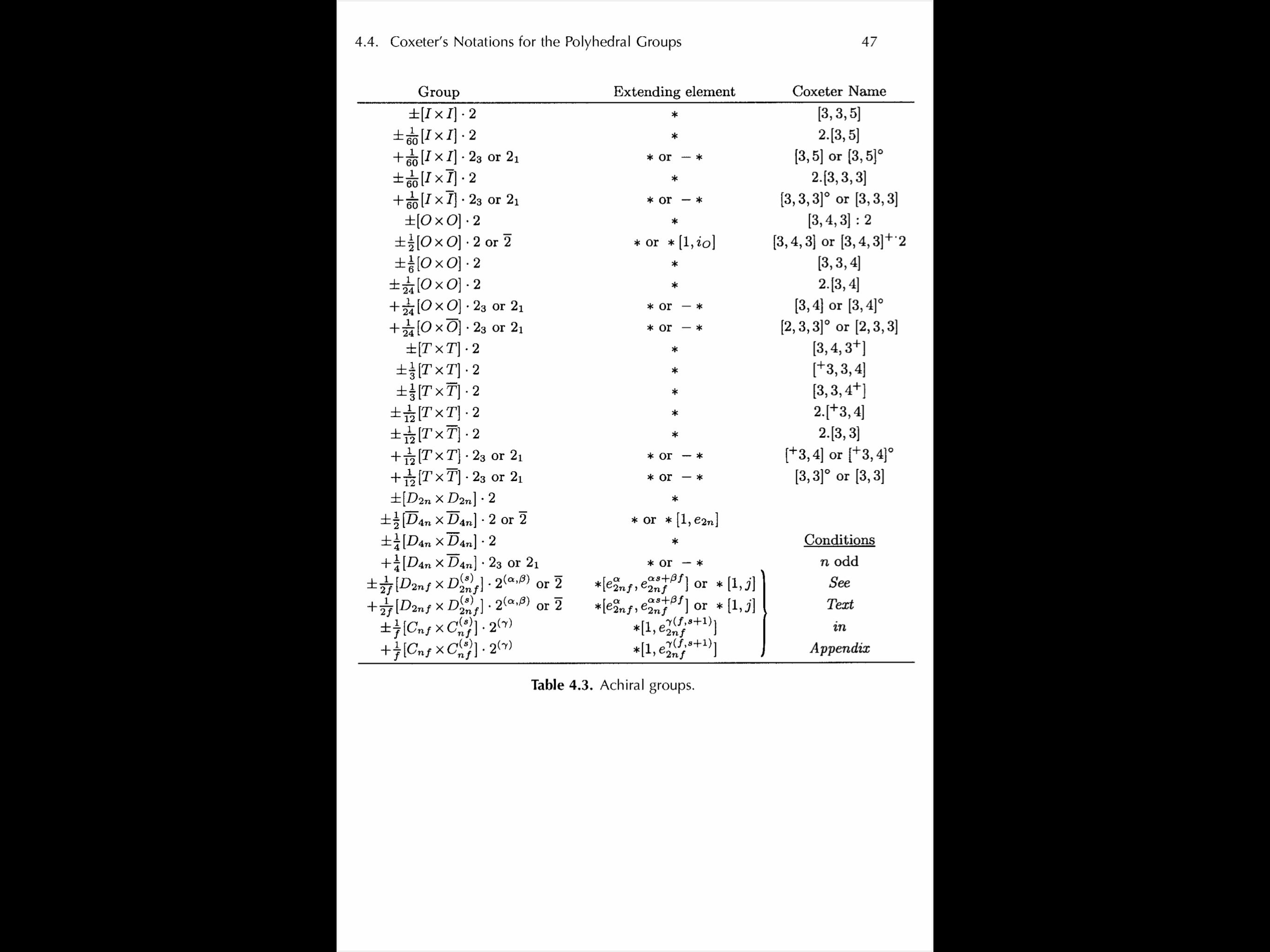In John Conway and Derek Smith's On Quaternions and Octonions: their Geometry, Arithmetic, and Symmetry, they introduce a way to connect quaternions to 4D Point Group.
Suppose: $[l,r]:x\to \bar lxr\;,\ast[l,r]:x\to\bar l\bar xr\;(x\in\Bbb H,\;l,r\in\Bbb H_1)$.


In table 4.2 we know $+\frac{1}{3}[C_3\times C_3]$'s available generator is $[e_3,e_3]$. And $e_n=e^{\frac{i\pi}{n}}$. So it actually generates $C_3$.
In table 4.3 we know $+\frac{1}{3}[C_3\times C_3]\cdot2^{(2)}$'s extending element is $\ast[1,e_6^{2(3,2)}]$ And $(a,b):=gcd(a,b)$, so it could not generate $C_{3h}$. If I would like to generate $C_{3h}$ I need $+\frac{1}{3}[C_3\times C_3]\cdot2^{(6)}$, but it obilivate the conditions in the Appendix of Chapter 4's Table 4.4

So how could I represent $C_{3h}$ in 4D Point Group?
And I seems the eqation $s^2=fg-1$ Seems weird, because if I suppose $s=1,f=3$ So as the equation $g$ is not a integer, not even number. So I think $s^2=fg+1$ is the correct equation, because in that equation $g$ is equal to 2, is an even number.
